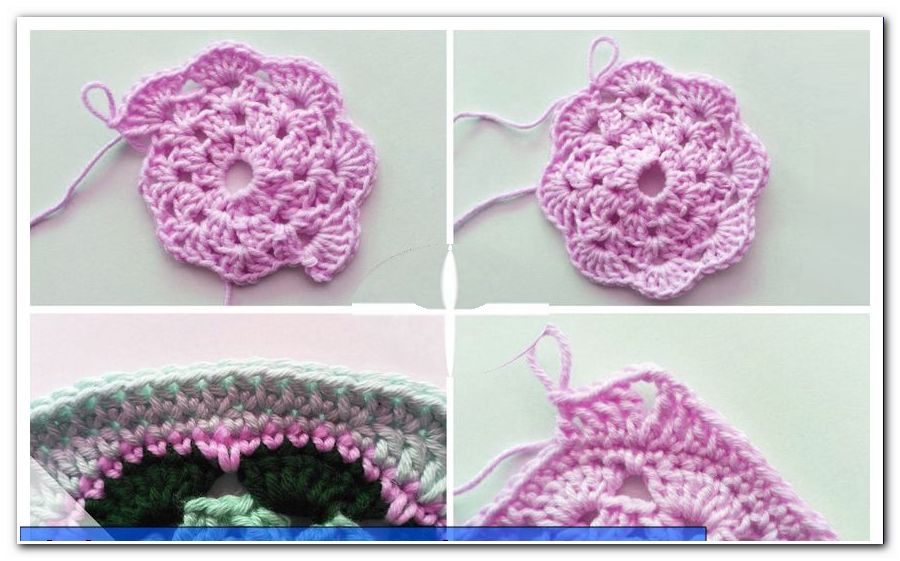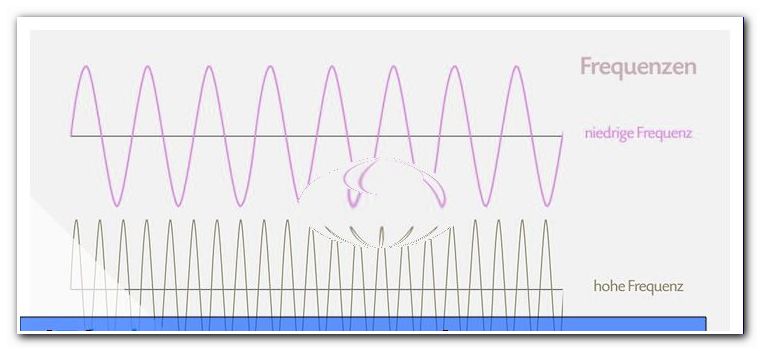Knitting checkerboard pattern: one and two colors - free instructions

- Knit monochrome checkerboard pattern
- Size of the pattern
- Knit two-tone checkerboard pattern
- 2. Take up color
Of course, when knitting, it's all about the cut. With how many stitches do I start ">
A checkered headband, a scarf with a varied surface texture or a sweater with a colorful cuff - all this can be knit with a technique in the blink of an eye. The checkerboard pattern keeps what the name promises: at the end you will receive a checkered knit. It can be both one or two colors. The exact procedure is described in this manual.
Knit monochrome checkerboard pattern
Material:
- Wool in a color
- 2 knitting needles in the right size
In general, no information can be provided here on which wool is better or worse to knit a checkerboard pattern. It's basically a universal pattern that works with any yarn. For a first try, you can just take wool remnants. Later, knit the pattern with the material you use to make your knit anyway.

Prior knowledge:
- right stitches
- left stitches
The basic idea of the monochrome checkerboard pattern is to create a surface texture consisting of even squares. The difference in the surface structure can be achieved by changing the left and right stitches.
In detail, the procedure looks like this:
Knitting to the point where you want the pattern to start, smooth right. In our example piece, knit 2 rows of plain right on the stitch of 34 stitches. At the edges there are 2 right stitches each. In principle, there is nothing wrong with knitting the pattern to the edge.
Now knit 5 stitches on the left. There are 5 right stitches. Continue the change of 5 left and 5 right stitches until you have reached the end of your pattern in each row. In our example we switched between left and right 5 times.
In the back row, knit all the stitches as they appear. This means that the left stitches of the row are now knitted on the right and vice versa. Overall, knit 5 rows back and forth in the same alternation from left and right stitches.

In the 6th row you turn your knitting rhythm exactly. Where right stitches appear in the pattern, knit left stitches. Knit the left-hand stitches to the right. So at first our approach was 5 left - 5 right - 5 left - 5 right - 5 left, now 5 right - 5 left - 5 right - 5 left - 5 right. This new order works in turn over 5 rows. Now you will gradually be able to clearly see the boxes that are separated from each other.

Then the change follows again, in which right stitches on the left and left stitches on the right are knitted. Continue this change every 5 rows until your pattern reaches the desired size.

Size of the pattern
The checkerboard pattern is by no means fixed on the change of all 5 stitches and every 5 rows. If you find smaller squares more suitable, you may already change all 3 stitches from left to right and vice versa. Then you have to adjust the number of rows too. The change then takes place every 3 rows.
On the other hand, you can make the pattern bigger. Then you may only change all 8 stitches and rows from left to right and from right to left stitches.
It may also happen that you are set to a certain total mesh size, for example because of the size of a garment. Then it makes sense to choose the size of the boxes so that the total mesh number is divisible by the box width. A little bit you can compensate here also over the edge stitches left and right of the pattern.
Note: If you want to use the checkerboard pattern in the circular knitting, knit the stitches within a box as they appear. When switching to the next row of boxes, all right stitches are knitted on the left and all left stitches on the right. If the checkerboard pattern is to go completely around, you must make sure that the total number of stitches is just divisible by the width of a box.
Knit two-tone checkerboard pattern
Material:
- Wool in 2 different colors
- Knitting needles in the appropriate strength
The two-tone checkerboard pattern is probably what most people imagine under the name: like a chessboard, the color changes from one box to the next. But it does not have to be about the combination of black and white. Also, the wool does not necessarily have to be exactly the same material in 2 different colors. They should be processed with the same needle size. Otherwise, it can also look pretty, for example, to combine a smooth wool with a fringed wool.

Prior knowledge:
- right stitches
Basically, it is very helpful if you bring a little experience in knitting with 2 different colors for the two-tone pattern. For example, if you have knit Norwegian patterns before, this guide will be very easy to find here. Nevertheless, the description is designed so that even beginners in knitting with 2 colors cope with it.
The pattern set is exactly the same as the monochrome checkerboard pattern. So you work with a change every 5 stitches and every 5 rows. However, do not switch from left to right stitches, but from one wool to another. They knit smooth right throughout. This means when knitting in rows, that the back row is worked with left stitches. When knitting in rounds you stay at right-hand stitches throughout. The thread that is not being knit should always hang down on the back of the piece. So knit a back row with left stitches, showing the unused thread to you.

2. Take up color
How to work in the second wool color at the beginning of the pattern depends on the overall condition of the knit. If you work with a few right stitches left and right of the pattern and the edge stitches at the end will possibly disappear in a seam, the procedure in our example piece is suitable for you. The new color is already knitted in the edge stitch of the first row with pattern. You simply take both colors on your knitting needle for the edge stitch. Then the second color runs along until the first use on the back of the knit. This should not be longer than 5 stitches.

If the pattern starts in the center of the piece, pick up the new color where it is needed the first time. In this procedure, you must sew the protruding initial thread at the end well.
Regarding the size of the pattern, you may also vary the two-color chessboard. Here it is only to be noted that at widths of more than 5 stitches, the thread that runs along the back occasionally needs to be fixed. This avoids large tabs on the back of the piece, which are very impractical, especially for garments. Make sure to feed in the running thread in about every 4 to 5 stitches. To do this, simply put it over your work thread at the appropriate stitch before you knit it off.

Tip: Stick to the rule as many stitches as knitting rows, the rectangles are a bit wide. Knitting a little higher, for example 6 rows with 5 stitches width, the boxes look rather square.





